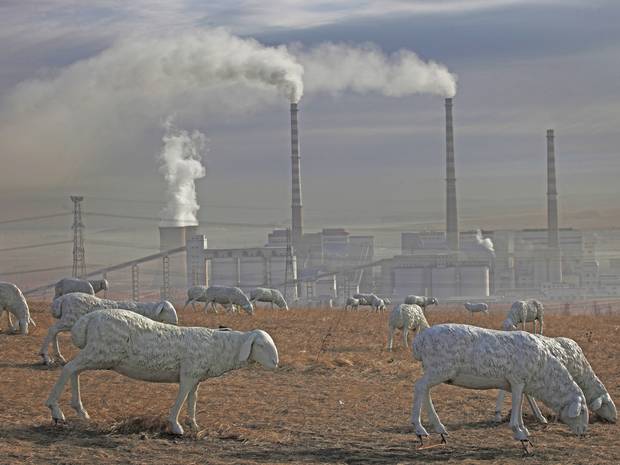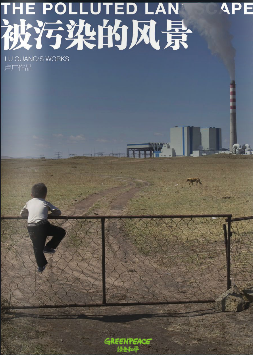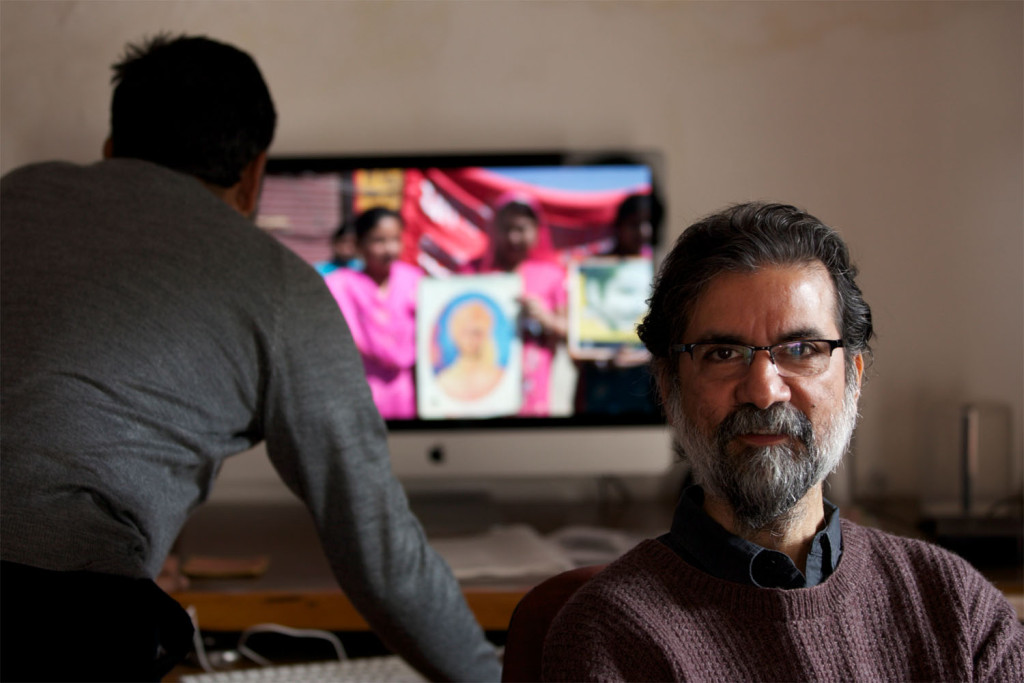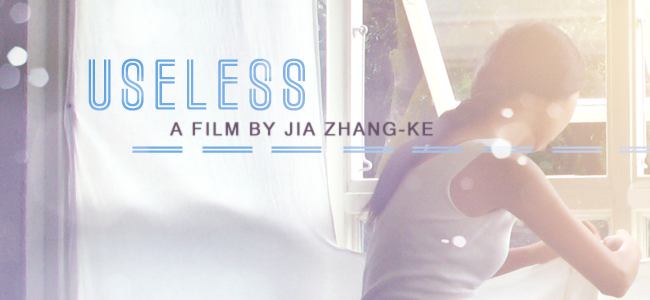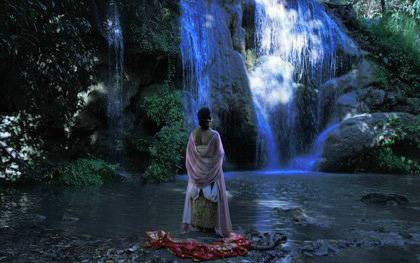As a final post in this series of three on the 2015 ASLE conference, Salma Monani and I, would like to share the curatorial blurbs for the inaugural mini film festival we organized along with assistance of the conference organizers and local independent theatre, the Kenworthy in Moscow, ID. We heard that the event drew more than 150 conference attendees, which we hope will inspire folks to build a similar event for the next ASLE conference in 2017 (location tbd). When possible we will also include embedded video or links to the films we selected.
ASLE Film Fest 2015 Program I:
Forest Ecology and Bioregional Identity in Pacific Northwest Film
Curated by Stephen Rust
For my part in this first-ever mini film festival program for ASLE, I have selected three films that explore the liminal space of Pacific Northwest forest ecosystems:
Madison McClintock’s 2014 documentary, Fungiphilia Rising
Kurtis Hough’s 2011 experimental film, Mossgrove / Bed of Moss
Vanessa Renwick’s 1998 found footage avant-garde film, Food is a Weapon
The Pacific Northwest contains many environments, from the lush Palouse and sparse high desert to mountain meadows, misty beaches, and many more. In selecting these films, I was inspired by Matthew Holtmeier’s notion of “bioregional subjectivity.†In a paper at the 2014 Society for Cinema and Media Studies conference in Seattle, Holtmeier argued:
As a theoretical framework, bioregional thinking has prompted a new way of thinking about the politics of place, apart from the tradition of nation states. Looking to both documentary and fiction film, I argue that these so called Cascadian Films contribute to the production of a Cascadian cultural imaginary through promoting the intersection of Felix Guattari’s three ecologies: social relations, psychology, and the environment. While film and television produced in the Pacific Northwest often places the setting ‘elsewhere’ — such as Battlestar Galactica remaking Vancouver, BC into Caprica City on a distant planet — ‘Cascadian Films’ relish in the real equivalent of their settings by depicting particular landmarks, environments, and people.
Each of the films selected for this program relishes in depicting Northwest forests and their power to shape our regional identity. Though but a scant percentage of our old growth forests remain, their shadows loom over our lives here in the Northwest. With an eye to the theme of this year’s ASLE conference, I have also sought to meditate on the space where topsoil meets and mixes with air and water, that porous, permeable meeting space of mushrooms, slugs, and saplings. Finally, I sought to mix three genres of independent film that speak to the promise of Pacific Northwest film, a largely neglected area of study among scholars.
North of Hollywood, things work a bit differently. Making money and reaching audiences remain a top priority for media producers, but cultivating friendships, reflecting on the climate, and interrogating the area’s historical complexity are just as important to many media producers, both those who have left Hollywood seeking a more relaxed atmosphere and those born and raised in the area. Apart from two books on the Vancouver, BC film industry published around 2000 (Mike Gasher’s Hollywood North and David Spaner’s Dreaming in the Rain), the Northwest has been almost entirely neglected by film and media scholars, a shocking discovery for anyone interested in all the area has to offer. From early films like Buster Keaton’s The General (1926) and blockbusters like Animal House (1978) to more recent independent fare like Mina Shum’s Long Life, Happiness, and Prosperity (2002) and Kelly Reichardt’s Wendy & Lucy (2008), the Northwest has made enormous contributions to film and media history and deserves the greater recognition events like this will bring.
The Films
Fungiphilia Rising (Madison McClintock, 2014):
An ode to nature’s often forgotten alchemists and their allies, Fungiphilia Rising is an invitation to explore the fascinating world of mushrooms throughout the American West. By attending mushroom forays and fungus festivals, talking to scores of individuals from mycologists to artists, businessmen to locovore chefs, Fungiphilia Rising paints a vivid image of the secret life of mushrooms and its admirers. In addition to revealing the multifaceted role mushrooms play in our culture, the film aims to bring awareness to the important ecological functions they perform in our world’s ecosystems and in human environments. Fungiphilia Rising is a classically structured documentary film combining footage shot on location with ‘talking head’ interviews with folks like mushroom foragers Larry Evans and Jim Stillwell, leading figures in the mycology movement, Cathy Cripps, Peter McCoy and David Rust, and renowned chef Anthony Strong.
Directed by Madison McClintock, the film was produced by her small Bozeman, MT production company Nestbox Collective, a collaborative space for Madison and collaborator Roshan Patel to share stories about the curious ways people connect with their environments. Fungiphilia Rising is currently screening at festivals throughout the U.S. and is featured on National Geographic’s “Short Film Showcase.â€
Fungiphilia Rising from Madison MCCLINTOCK on Vimeo
Mossgrove / Bed of Moss (Kurtis Hough, 2011):
Lovers of high definition and time lapse experimental documentary films like Microcosmos will feel right at home in Kurtis Hough’s Mossgrove, an audio-visual meditation on the kinetic expressions of slugs. Hough’s cinematography and Rachel Grimes’ lush musical score open up space for the viewer to experience the forest floor’s rich detail. In Bed of Moss the camera shifts from its focus on slugs to the moss itself; opening a doorway of perception into the lines, colors, and shapes of the forest. As ecocinema scholars, we often think about the differences in the way viewers interpret and make use of cinematic texts. For example, experiencing the world of a wordless documentary like Mossgrove / Bed of Moss is an adventure in perception different from that of a classical documentary like Fungiphilia Rising. What do you think of this difference?
Directed by Kurtis Hough, the film was produced by Hough’s Portland, OR studio KH Studios. It has screened at festivals throughout the United States and Canada.
Mossgrove / Bed of Moss from Kurtis Hough on Vimeo.
Food is a Weapon (Vanessa Renwick, 1998):
Vanessa Renwick’s description of her short found footage avant garde film helps explain why I selected this film for the denouement of my program:
“Haunting NW logging footage from the 1940’s reveals old growth treasures looted for the war effort. A Eulogy for trees.â€
Set to music by Lara Mulvaney, Renwick’s film serves to remind us how the Pacific Northwest soil has been exploited from the beginning of its discovery by Euro-American settlers. Renwick’s terms “haunting,†“looted,†and “Eulogy†indicate her intention with the film. And when you see the size of the trees hauled off by semi-trucks in the film it is easy to understand Renwick’s point. Perhaps the most poignant image in the film, however, is the shot of the young saplings, which are shown off as if to suggest that the soil will continue to give and give for mankind’s benefit. Yet when seen in the context of Renwick’s film, the image resonates with the films’ title to suggest that the saplings are the food of the earth, exploited by humans as a weapon in our war.
Food is a Weapon is comprised of found footage from 1940s documentary films, originally filmed on 16mm and Super-8 and transferred to 16mm. The film is included on Renwick’s DVD, North South East West, a compilation of short films produced over her 30+ year career as an independent filmmaker and artist. Renwick’s work has been featured at numerous museums and galleries across the Northwest.
The film is unavailable online but you can read Renwick’s description and find a link to her DVD of collected films at: http://www.odoka.org/the_work/food_is_a_weapon/
Steve’s Acknowledgments
Many thanks to the Northwest Film Center and Portland Ecofilm Festival in Portland, Oregon for suggesting a number of terrific films as I planned this event. Thanks to the University of Idaho for hosting this year’s ASLE conference and the Kenworthy Theatre for hosting this inaugural film festival. Thanks to the Northwest Filmmaker’s Festival and Portland Ecofilm Festival for recommending a number of great films during this process. Thanks also to the ASLE conference planning committee for their help in organizing this event, particularly Anna Banks, Erin James, Jennifer Ladino, Russell Meeuf, Scott Slovic, and ASLE managing director, Amy McIntyre. A special thanks to University of Idaho librarian Rochelle Smith for assisting with purchase of the films and ensuring that they will be archived in the library for future use by students, faculty, and the public.
ASLE Film Fest: Program II
Indigenous Ecocinema
Curated by Salma Monani
Indigenous cinema is underground cinema. Termed Fourth Cinema by Maori filmmaker Barry Barclay, it rises to protest representations imposed on indigenous people by mainstream First (Euro-American) Cinema; and it does so, most often from the margins, with minimal budgets and with grassroots chutzpah. What does it mean to resist centuries of hegemonic stereotyping and marginalization? What stories are Fourth Cinema filmmakers telling, and how do they do so in ways that blur indigenous cinema into ecocinema?
This program, put together with the help of many individuals, all interested in cinema’s possibilities, attempts to answer these questions. Constrained by length and time, the program nonetheless showcases some of the astounding diversity in contemporary indigenous film’s eco-imaginaries, bringing together four short pieces by filmmakers with ties to the Northwest. From classic documentary mode, to lyrical cinema, sci-fi fantasy, and animated memoir, the arrangement of the four pieces explores a breadth of genre aesthetics, which together pursue a single narrative thread—that of indigenous survivance* in the framework of cyclic time. Each film joins past to present to future, echoing Nez Perce Hattie Kauffman’s words, “our history is long and is still being written every day.â€
To honor the tribes whose ancestral lands we are on, the program begins with the trailer of ná·qc tımÃne wıs÷x: Of One Heart. Narrated by Hattie Kauffman and including the voices of many of her Nez Perce community, ná·qc tımÃne wıs÷x’s trailer provides a taste of the 20-minute documentary made as a collaboration between the Nez Perce National Historical Park and North Shore Productions. It grounds the NimÃipuu people (as the Nez Perce call themselves) and their culture in this land, highlighting too how colonial society’s broken treaties attempted to sever the ties. Despite these atrocities of land theft, Kauffman affirms NimÃipuu cultural revival today, “We know our past; we know where we came from.â€
In his experimental and lyrical works, Métis artist and filmmaker, Tyler Hagan seeks to uncover his past, to know where he comes from. In the Similkameen is located across the U.S. border in the lands of the Lower Similkameen First Nations Bands. Documenting a peaceful day, In the Similkameen centers both land and church, leaving us to reflect on the invisible violence undergirding the region’s serene beauty, and to wonder at the area’s continuing legacy as contact zone for colonizer and colonized, natures and cultures, and the affect of place. Hagan explains, “While the church and its relationship to its surroundings represent the larger history of conflict between the smÇlqmix people of the syilx (Okanagan) nation and Canadian settlers, In the Similkameen focuses on the visceral impact that it [the church] has as a part of the landscape.â€
We encounter what looks like the Northwest landscape only fleetingly on the screens that serve as backdrop to the human exhibits who live in Erin Li’s Kepler X-47. A sci-fi dystopian fantasy set on a distant planet in the future, Kepler X-47 is grounded in Li’s anti-capitalist conceptual exploration of human zoos as allegory for how, as she describes, “most of us accept life as it is, without question, and are willingly chained by the pursuit of a tainted American Dream.†Co-produced by Kaz Kipp (Nez Perce/Umatilla) and screened at festivals such as ImagineNATIVE, it also speaks to the madness of colonial hubris that blatantly exhibited indigenous people, and as allegory of the Indian residential school legacy, which followed in the wake of missionary influence we see reflected in Hagan’s In the Similkameen.
From Kepler X-47’s allusions to the residential school system, we face its explicit mention in Lisa Jackson’s Suckerfish. Animation, childhood photographs, and stylized recreations generate a quirky yet moving portrayal of the director’s relationship with her mother, a woman broken by the Indian residential school system. Suckerfish eschews the sweeping vistas of environment encountered in the earlier films, and concentrates instead on enclosed indoor and urban spaces. Yet, in this redirected focus on the small spaces, including the bodies and identities of herself and her mother, Jackson expresses a grounded eco-materiality in what it means to reclaim her native heritage.
Jackson’s reclamation brings us full circle to ná·qc tımÃne wıs÷x: Of One Heart’s statements of resilience. In its own chosen way, each film of the program takes us backwards so we might move forward, better equipped to understand not only the deep injustice of colonial legacies but also indigenous survivance. Survivance is a baton these films offer its indigenous and non-indigenous viewers in an age of global environmental crises that often seem all too overwhelming.
*[Survivance is Anishnaabe cultural theorist, Gerald Vizenor’s call to re-think the more passive idea of “survival†as a more active engagement of resistance.]
The Films, Filmmaker Bios, and More:
ná·qc tımÃne wıs÷x: Of One Heart (Trailer). Dir. Rory Banyard. Nez Perce National Historical Park in collaboration with North Shore Productions, 2014. [Duration: 2.19 minutes.]
ná·qc tımÃne wıs÷x: Of One Heart is a theater film produced for Nez Perce National Historical Park in Spalding, Idaho. North Shore worked with Nez Perce people from three different reservations to craft the film, however; “ná·qc tım̉Ãne wıs÷x†means “of one heart†and the film highlights the core values that are shared by Nez Perce or NimÃipuu everywhere.
By touching lightly on the history for which the Nez Perce are famous, and focusing primarily on NimÃipuu life and culture in the present, the film creates a portrait of a people who are very much future-focused and in control of their destiny. In this way the film is designed to break through stereotypes that may be held, and allow Park visitors to connect to NimÃipuu people and culture as they are today.
ASLE has collaborated with the Nez Perce National Historical Park to organize a conference field trip if you are interested in learning more about the NimÃipuu. You can also learn more about the film, as well as other North Shore productions at their website.
In the Similkameen. Dir. Tyler Hagan (Métis). Single Channel 16mm on HD Video; Distributor, VTape. 2013. [Duration 5.39 minutes].
Tyler Hagan is a filmmaker, photographer, and historian based in Vancouver, B.C. whose work engages ideas of landscape, place, and identity. His work has shown at Berlinale, Montreal World Film Festival, ImagineNATIVE Film and Media Arts Festival, as well as online with the Canadian Broadcast Corporation, and the National Screen Institute of Canada.
Hagan describes his work: “In the Similkameen is originally a single channel video loop that accompanies an exhibition of photographs, and the interactive documentary Similkameen Crossroads, produced by the National Film Board of Canada. However, it can be screened as a stand-alone piece as well.
“It interrogates ideas of landscape and place by placing the viewer in the position to engage with the experience of being. …Set on the Lower Similkameen Indian Reserve lands in the Southern Okanagan, the central conflict of the work subtly exists between the ‘natural’ landscape and ‘man-made’ incursions – namely a turn of the 20th Century missionary chapel, St. Ann’s.  As Upper Similkameen Elder Ramona Allison related to me what her father had told her as a child, ‘We used to pray under the trees. Then the white man came, cut ‘em all down, and now we pray in the trees.’ This perspective reminds us that the dichotomy of ‘natural’ and ‘man-made’ is a construct of western thought, and encourages us to think, and experience our world as whole – as an ecosystem. In the Similkameen is the expression of attempting to embody such a perspective. It is an invitation to look, to listen, and to reflect.â€
You can learn more about Hagan’s work at his website.
Kepler X-47. Director, Erin Li. Producers, Kaz Kipp (Nez Perce/Umatillo), Gregory Chou and Erin Li. Distributor, American Film Institute. 2014. [Duration: 14.48 minutes].
Based in Los Angeles, Kepler X-47’s film crew are at the cutting edge of an up-and-coming film generation. Kepler X-47 has made the film festival circuit and received accolades such as the Best Short Film Nominee at The Geekie Awards and Grand Jury Golden Reel Nominee – Excellence in Short Film at the Los Angeles Asian Pacific Film Fest. SHOOT named Li as an up-and-coming helmer to watch in their 2015 worldwide search for the next generation of film and commercial directors. Li’s work was also curated for SourceECreative’s The Scout, which showcases unsigned auteurs. Li has directed branded content for General Electric, and her work has been commissioned by Film Independent and featured on Upworthy, Huffington Post, and Voto Latino. Her films have also screened at Slamdance, LACMA Young Directors Night, Los Angeles Film Festival, American Cinematheque, the Academy for Motion Picture Arts & Sciences, and been recognized as a Vimeo Staff Pick and Hammer-to-Nail Finalist.
Li describes her inspiration for the film: “The concept behind Kepler X-47 was initially sparked by the Museum of Contemporary Art’s ‘Under the Big Black Sun’ exhibit featuring California art from 1974-1981. In 1978, conceptual artist Lowell Darling ran for governor of California using a tongue-in-cheek campaign. One of Darling’s proposals was to create a ‘Human Zoo’ – all animals would be returned to their original habitats and the government would hire the unemployed, who would wear animal costumes and get paid from the zoo’s proceeds.â€
You can sign up to watch KEPLER X-47 here.
Suckerfish. Dir. Lisa Jackson (Anishinaabe). Distributor, Moving Images Distribution, 2004. [Duration: 8.12 minutes].
Lisa Jackson has been making films since 2000 and has accrued numerous awards for her innovative treatment of indigenous issues. Suckerfish, one of her earlier films, has screened at over 50 film festivals as well as on Canada’s Aboriginal Peoples Television Network and Canadian Broadcasting Corporation channels.
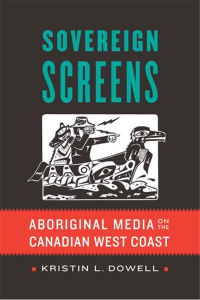 From realist documentary (Reservation Soldiers and Hidden Legacies) to ironic biographies (e.g., Suckerfish and Intemperance) and performance-based public announcements (Snare, which was commissioned by ImagineNATIVE as part of the Stolen Sisters program, an initiative to draw attention to violence towards aboriginal women), Jackson continues to experiment with cinema as a medium that uncovers social issues. Of her many different approaches Jackson says there’s one thing that holds them together, “I’ve always been social issues oriented – I think, as I go on, the social issues are there but they’re less literal though maybe more powerful.â€
From realist documentary (Reservation Soldiers and Hidden Legacies) to ironic biographies (e.g., Suckerfish and Intemperance) and performance-based public announcements (Snare, which was commissioned by ImagineNATIVE as part of the Stolen Sisters program, an initiative to draw attention to violence towards aboriginal women), Jackson continues to experiment with cinema as a medium that uncovers social issues. Of her many different approaches Jackson says there’s one thing that holds them together, “I’ve always been social issues oriented – I think, as I go on, the social issues are there but they’re less literal though maybe more powerful.â€
Jackson is part of Canada’s current vanguard of indigenous women filmmakers. You can learn more about her work at her website, and in the scholarly engagements of scholars such as Kristin Dowell’s Sovereign Screens: Aboriginal Media on the Canadian West Coast (2013).
Acknowledgments to the NimÃipuu people for hosting us on their ancestral lands. Many thanks also to the all the filmmakers and their distributors for generously agreeing to share their films for this inaugural film festival. Thanks too to the ASLE Executive Council and Idaho site collaborators for including the film festival in the conference agenda, Rochelle Smith at the University of Idaho library for her immense patience with helping procure the films’ screening rights, Dr. Jan Johnson for her invaluable help with contacting local Nez Perce collaborators, the Kenworthy Theater folks, and to Amy McKintyre, ASLE’s Managing Director.
Science Fiction Film and Television<http://liverpool-university-press.myshopify.com/collections/journals/products/science-fiction-film-and-television> seeks submissions for a special issue on the Mad Max franchise.
The original Mad Max (1979) was a hard-edged low-budget exploitation film with sf elements, frantically put together in twelve weeks by a small crew working in and around Melbourne on a $325,000 budget. Its worldwide success led to two incrementally more ambitious sequels that expanded the first film’s dystopian vision significantly: Mad Max 2 (aka The Road Warrior) in 1982, and Hollywood behemoth Mad Max Beyond Thunderdome in 1985. The film trilogy became hugely influential in its depiction of a post-apocalyptic wasteland, the sequels in particular establishing a visual style that soon became a default for visual representations of punk dystopias in film, television, comic books, video games, and music videos. At the same time, a wide range of comics, novels and novelizations, and video games expanded the films’ storyworld significantly.
When the fourth film in the franchise was released to much acclaim three decades after the original trilogy ended, it proved to be neither prequel, sequel, nor reboot. Mad Max: Fury Road instead revived the franchise as a variation on established themes, full of references to earlier films, but without a clear chronological relationship to its precursors. The film’s gender politics, ideology, and aesthetics have been widely debated, and new films and transmedia expansions are once again being prepared.
SFFTV<http://liverpool-university-press.myshopify.com/collections/journals/products/science-fiction-film-and-television> invites fresh approaches to Mad Max as a sf entertainment franchise and transnational cultural phenomenon, with possible emphases on:
* politics and ideology
* fossil fuel and peak oil in sf
* post-apocalyptic narratives
* franchising and transmedia world-building
* sequels, spin-offs, and novelizations
* ecological disaster sf
* transnational cinema
* exploitation cinema and cult film
* materiality and sf: film vs. digital cinema
* transnational celebrity: Mel Gibson, Tina Turner, Tom Hardy, Charlize Theron
* representations of race and ethnicity
* gender politics and queer theory
* sf literature influences
* music video aesthetics
* “the indie blockbusterâ€: independent cinema in post-classical Hollywood
* representations of children and childhood
* George Miller and auteur theory
* Mad Max and transnational exploitation cinema
* Mad Max 2 and queer theory
* Mad Max Beyond Thunderdome and 1980s corporate synergy
* Mad Max: Fury Road and digital cinema
Articles of 6,000-9,000 words should be formatted using MLA style and according to the submission guidelines available on our website. Submissions should be made via our online system at http://mc.manuscriptcentral.com/lup-sfftv. Articles not selected for the special issue will be considered for future issues of SFFTV<http://liverpool-university-press.myshopify.com/collections/journals/products/science-fiction-film-and-television>.
Any questions should be directed to the editors, Dan Hassler-Forest (d.a.hassler-forest@uva.nl), Mark Bould (mark.bould@gmail.com), Sherryl Vint (sherryl.vint@gmail.com), and Gerry Canavan (gerrycanavan@gmail.com).
The deadline for submissions is Feb 1, 2016, with anticipated publication in spring 2017.
At the ASLE Biennial Conference in Moscow, Idaho this year, I was quite happy to find that I could go from panel session to panel session seeing so many papers on film, visual media, video games, and the like. As Steve’s recent summary post and report on the Ecomedia Interest Group meeting make clear, 2015 was surely a watershed year for ecomedia studies at ASLE. Such exciting times!
A still from Under the Dome, Chai Jing’s controversial 2015 documentary which Winnie Yee discussed in her ASLE talk on Chinese ecocritical photography.Â
One of the most interesting panels I attended this year was “Jungles, Earth, Mines, Ruins: Representing Asian Environments in Cinema and Visual Media,” chaired by Kiu-wai Chu of the University of Hong Kong. This panel (designated E2 in the Conference Program) took place on Thursday, June 25 from 1:30-3:00pm and consisted of four presentations, discussed individually below.
As Kiu-wai made clear in his opening remarks, the panel’s over-arching goal was to address a gap in current ecomedia studies: discussion of non-Euro-American films and visual media. In an attempt to draw attention to cutting-edge work in Asian ecomedia studies, the “Jungles, Earth, Mines, Ruins” panel looked at the ways documentaries, fiction films, and still photography explore ecocritical themes in the works of key Asian visual media producers.
A 2005 photograph by Lu Guang. In her talk, Winnie Yee read Lu’s human subjects’ refusal to face the camera as a decentering of the human presence in Lu’s ecocritical photography.Â
The panel’s first presenter, Winnie L.M. Yee (University of Hong Kong), discussed the work of Edward Burtynski and Lu Guang, two significant ecocritical photographers, in “Polluted Landscapes: Photographs of Post-socialist China by Edward Burtynsky and Lu Guang” [note: Winnie changed her title from the one printed in the program]. Her main argument was that Chinese photographer Lu’s work responds to and corrects Burtynski’s by creating images that emphasize the environmental costs of human behavior writ large while decentering individual human presences in the shots. For Winnie, if Burtynski’s work is seen as being an example of the Kantian sublime, Lu’s photographs provide an experience of the ecological uncanny, a more horrifying and less humanistic mode than Burtynski’s (toxic) sublime. Winnie elucidated this argument via some very sharp close readings of Burtynski’s and Lu’s photographs, including Lu’s eco-uncanny shot of sheep and a factory seen below.
UPDATE 7/7/2015: Winnie has provided the following links to Lu Guang’s works:
– Works commissioned by Greenpeace (you shall find the little boy facing away from the camera as the cover of the album)
– Works awarded by W. Eugene Smith Memorial Fund
Alok Amatya (University of Miami) presented on Indian documentary cinema in “‘The Company has swallowed it’: Framing Indigenous Resistance to Corporate Mining in India.” Alok argued that Sanjay Kak’s Red Ant Dream (2013), while an important film for the ways it calls attention to India’s internal struggles over mining, fails to provide an insider perspective on these events and may serve to promote its filmmaker as much as it does the issues it purports to examine. Director Kak stays out of frame in Red Ant Dream, asking questions of his revolutionary peasant subjects from offscreen, yet this erasure of his physical presence from the film conveys the idea that what the viewer sees in Red Ant Dream constitutes neutral, objective reportage that achieves immediacy with its subjects.
Does director Sanjay Kak misrepresent the reality of Maoist and indigenous struggles with mining companies in India when he elides his own presence as interviewer in Red Ant Dream?Â
In his talk, Alok asked: What if the film had been made by one of the actual participants in the Maoist resistance against Indian mining companies? What if Kak had shown himself interviewing participants, thereby “admitting” to his presence as an outsider who shaped viewer responses to events depicted via his interviewing and editing choices?
Kiu-wai Chu also questioned the critical impact of what viewers see in Jia Zhangke’s 2007 documentary Wuyong (Useless) in his talk, “Contemplating Soil: A Dialectical Ideological Eco-critique of Jia Zhangke’s Useless.” Deploying Andrew Hageman’s dialectical ideological critique methodology outlined in “Ecocinema and Ideology: Do Ecocritics Dream of a Clockwork Green?” (Ecocinema Theory and Practice, Routledge 2013, pp. 63-86), Kiu-wai analyzed Zhangke’s documentary techniques in order to ask questions about Useless‘ efficacy as (anti-)capitalist critique. Useless documents a project of the same name in which fashion designer Ma Ke buries various garments in soil for two years, then subsequently unearths them and displayis them as a high-end fashion line called “Useless.”
In his presentation Kiu-wai asked: Does Zhangke’s film achieve a critical distance that allows the viewer to seriously question Ma’s activities here? Is Zhangke so intrigued by the details of the fashion project that his film misses a chance to ask hard questions about the deeply problematic process of turning garments worn by the working poor into haute couture? Beyond these troubling questions, Kiu-wai was interested specifically in how immersion in soil created a new form of commodity, adding value, infusing these cast-away garments with new, highly commodifiable properties via their contact with the material reality of dirt. How and why does immersion in dirt connote “authenticity”? What is lost when this material connection to actual soil is packaged and commodified?
Finally, Jeffner Allen (Binghamton University, SUNY) gave an in-depth presentation on the theme of luminosity in the work of Thai director Apichatpong Weerasethakul in “Effulgences: Decomposition, Particles in Motion, and Apichatpong Weerasethakul’s Sonic Jungles.” Noting that Apichatpong is best known for his images of non-human animals, plant life, jungles, and the like, she explored the theme of light and effulgence in several of the director’s projects, including Uncle Boonmee Who Can Recall His Past Lives (2010). Jeffner’s breadth knowledge of the Thai director’s work was impressive, and her close readings of individual frames from his films was engrossing.
At the end of her talk, Jeffner urged all of us to check out Apichatpong Weerasethakul’s information page on Animate Projects.
In conclusion, the panel on Asian Ecocinema chaired by Kiu-wai Chu approached this year’s ASLE conference theme of “Notes from Underground” in a particularly material, “grounded” way. The four panelists on “Jungles, Earth, Mines, Ruins: Representing Asian Environments in Cinema and Visual Media” discussed aspects of material culture (smog, pollution, dirt, water, light) as represented, problematized, and/or critically wrestled with in fiction films, documentaries, and still photography from mainland China, Thailand, and India. Beyond that, all four presenters supported their claims with keenly observed and sharply interpreted visual close readings of individual photos and screenshots, displaying a high level of formalist interpretive skill. It was a smart, stimulating, and entertaining panel and I hope we see more panels like this at future ASLE and ecomedia conferences.
This is the second post in a series of three on the 2015 ASLE conference. This post documents our discussion at the second (ever), Ecomedia Interest Group meeting, held Thursday evening June 25 from 5:30-6:30pm.
20 people from a wide variety of universities and departments were present for all or part of the meeting. Not bad considering the rather inconvenient hour of the meeting (pushing into the dinner hour) and the fact that that a number of our peers were draw to other interest groups meeting at the same hour, including the Asian Ecocriticism and Graduate Student groups.
After introductions the group reviewed the status of the 5 action items that came out of the 2013 meeting and then discussed new action items:
Item 1: Outreach to other organizations
Notably, one panel at this year’s ASLE conference, “When the Creature Emerges: Eco-Teaching Speculative Fiction Film” chaired by Bridgette Barclay and Andrew Hageman and featuring Barclay, Hageman, Steve Rust and Tiffany Deater, was sponsored by the Science Fiction Research Association.
Most significantly, many members of the ASLE Ecomedia group are also members of the Society for Cinema and Media Studies (SCMS), the largest international organization in the field of film and media studies. 2013 saw the start of a Media and the Environment SIG within SCMS which has quickly grown to more than 50 members. They have held two meetings, at the 2014 and 2015 SCMS conferences. For more information on that group see their group page at the SCMS site and their group Facebook page.
Significant as well was the 2015 Conference on Communication and the Environment held earlier in June in Boulder, CO. Our colleagues in communications, journalism, and the social sciences presented important findings at that conference that will help shape our conversation. Again this year ASLE sponsored a panel at the conference. The panel was titled “Communicating Crisis in Ecopoetics” and was chaired by Kristin George Bagdanov of Colorado State University and featured the following papers: “The Anthropocenic Crisis in Contemporary Ecopoetics,” Kristin George Bagdanov (Colorado State U.); “Depictions of Environmental Crisis in William Carolos Williams’s Paterson,”Sarah Nolan (U. of Nevada); and “Touch, Not Sight: Touch Perception in Aristotle’s DeAnima and Touch Imagery in Forrest Gander’s Poetry,” Gracie McCarroll (Colorado State U.).
To curate their inaugural ASLE mini film festival, featuring seven Pacific Northwest eco-films, Steve Rust and Salma Monani reached out to several organizations, including the Nez Perce cultural center, the University of Idaho libraries, the imagineNATIVE film festival, and the Nortwest Film Center.
Item 2 – An off-year ASLE on Ecomedia?
Interest remains strong in organizing an off-year ASLE-sponsored symposium on Ecomedia Studies for approximately 100 presenters. We’re still waiting for someone to pick up this ball and run with it. Planning well ahead for 2018 seems the best choice. Any takers?
In the meantime, Mario Trono invites all of us to Calgary, Alberta for the 2016 “Under Western Skies” Conference. The 2016 conference theme will be Water and film and media scholars are most welcome.
Item 3 -Maintaining Group Communication Hub
Folks are fine with EcomediaStudies.org remaining as the central communication hub for the group, supported by the Group Facebook Page, which currently has 240 members. Steve Rust has asked for folks to recommend a graduate student looking for a great CV line to become the resources editor for EcomediaStudies.org to maintain and update the bibliography, syllabi, and other resources that are difficult for Steve and Salma to maintain on their own.
A new feature: Forums, has been added to the website to encourage group communication. How useable that feature is remains to be seen. ASLE would like us to be using the Member Forum on the ASLE website but there is general agreement that this feature has been unused and is generally unappealing.
Steve is hesitant to start a ListServe but believes that a small and manageable list is needed for
Item 4 – Plenary Speakers on Ecomedia at ASLE
Yet again another ASLE has come and gone with a plenary speaker whose work focus primarily on Ecomedia Studies. Speakers like Stacy Alaimo last year and Stephanie Lemenager this year do work that intersects with ours but there is still a feeling that a plenary speaker from our field would cement our hard earned prominence in the environmental humanities.
Steve was reminded that the Ecomedia Interest group could have sponsored panels at this year’s ASLE conference which he did not realize had been adopted as a policy. Next conference panels can qualify for interest group endorsement.
Item 5 – A Journal?
One of the very first ideas that came out of the 2013 ASLE ecomedia meeting and the 2015 SCMS meeting was discussion of establishing a journal in the field to provide a publication venue and central location for shared conversation in the field. At this point, we generally agree that the relative size of our field may not yet quite justify a journal but we are definitely moving closer to that point. We’ll need someone in the field who has the financial savvy and institutional support to take on such a venture when the need becomes sharper. Perhaps someone at UCSB?
Lauren Woolbright raised a question about journals and the publication of video-based research, such as video essays and game-based scholarship. No one in the group had an immediate response for the perfect publication venue but several were suggested, including Resilience, Jump Cut, Critical Ecologies, Electronic Book Reviews, and Ant, Spider, Bee by Alenda Chang and others. Mario suggested In Media Res as a great online publication as well.
New Action Items:
- Clarify which panels are specifically ecomedia prior to conferences. For next conference, sponsor panels.
- Sarah Crosby suggested we plan a party for the next conference, if not sooner.
- Work on communication online and in-between conference years. Suggested options:
- improve the current Ecomedia Studies blog site to include resource wiki (Michelle Gibeault generously offered to help with the site); and also a way to provide member profiles; search options. More to come as tech support is difficult on a free site. A new Forums function has been added to the site but needs to be tested. This may be a place to organize reading groups and webinars if the function is use-friendly. Members are invited to send their member profiles to ecomediastudies@gmail.com.
- Create an Academia group page (which can be used as a listserv too? Elena Past generously offered to check into this and it turns out that it is not possible; however folks are encouraged to add the tags Ecomedia Studies or Media and Environment to their profiles)
- Continue using FB, but work on linking different social media sites to get all users (Alenda Chang mentioned Twitter).
- Members also agreed to be provide recaps on the panels they attended (Carter Soles, Lauren Woolbright, Ryan Eichberger both looked interested). We’re hoping to get these posted on the website over the next couple of weeks.
It was an absolute pleasure to attend the 2015 ASLE conference in Moscow, ID last week. As we all resurface from the conference and turn back to individual research, teaching, and summering, it’s important to reflect on what we accomplished and where we might go from here.
Over the next week or two, I’ll be asking conference attendees to share their thoughts on panels or events they attended.
In summary, the impact of ecomedia studies at ASLE was felt across the conference. Eleven panels, each comprised of three to four speakers, formed the Visual Arts and Film stream in the conference program. Additionally, visual media were the primary focus of more than a dozen other speakers spread throughout other panels. All told, that’s more than fifty conference presenters focused on visual arts and media. Video games studies was represented by a complete panel of four presenters (details below). While none of the plenary speakers at the conference was an ecomedia scholar, many of the presenters included visual media in their presentations. Two thought provoking films, Even Though the Whole World is Burning and Goodbye Gauley Mountain: An Ecosexual Love Story, were screened at Moscow’s independent theater, the Kenworthy and a first ever ASLE mini film festival featuring seven films by Pacific Northwest filmmakers was currated by Stephen Rust and Salma Monani. Perhaps most importantly, the Ecomedia interest group meeting was attended by twenty core members, who have dedicated themselves to growing the field in the years to come.
Meeting Report: Ecomedia Studies Interest Group
This week, the ASLE conference is taking place in sunny Moscow, Idaho. Coming on the heals of the Environmental Communication conference earlier this month in Boulder, CO, the ASLE conference provides more signs of the growing prominence of ecomedia studies across the academic spectrum.
An ecomedia interest group meeting will be held Thursday, June 5 and there are enough full panels devoted to film and media this year that the conference has created a ‘Visual Arts and Film’ stream to help conference goers note relevant panels.
Additionally, there are a number of film screenings and art installations to take note of:
On Thursday evening from 7:30-10pm be sure to check out “Ecologies of Inconvenience,” a video installation by Cary Peppermint and Leila Nadir of EcoArtTech.
Also on Thursday evening from 7:30-10pm a running loop of 7 short environmental films will play at the Kenworthy Performing Arts Centre in downtown Moscow, curated by Salma Monani and Stephen Rust.
On Friday at 1:30 the Kenworthy will screen Even Though the Whole World is Burning, a feature-length documentary of poet William S. Merwin followed by a discussion led by Aaron Moe.
Finally, on Friday at 4:00 the Kenworthy will screen Goodbye Gauley Mountain: An Ecosexual Love Story a feature-length narrative film followed by discussion led by Greta Gaard.
Soundscapes and Sonic Cultures in America, 6-8 Nov. 2015, Graz, Austria
Conference of the Austrian Association for American Studies
Organizers: Nassim W. Balestrini and Klaus Rieser, University of Graz
With this conference theme, the Austrian Association for American Studies tunes into the growing bandwidth that the study of sound has been acquiring within the field of American Studies and beyond. Special issues on sound studies have appeared in journals ranging from the American Studies Association’s American Quarterly to Music, Sound, and the Moving Image. Since 2009, the open access weekly Sounding Out! The Sound Studies Blog has been featuring peer-reviewed articles and scholarly conversations in myriad formats. It is also notable that the aforementioned special issue of American Quarterly appeared simultaneously with a complementary website that provides many of the sounds and soundscapes discussed in the featured articles. These examples from a burgeoning field have contributed to firmly situating soundscapes and sonic cultures as essential to the American experience and to American cultural practices.
In his seminal work The Soundscape: Our Sonic Environment and the Tuning of the World (1977), Canadian composer and environmentalist Raymond Murray Schafer conceptualized the “soundscape” as a central feature of how sound mediates between living organisms and their environments. In his World Soundscape Project (launched in 1971), which was later continued as the World Forum for Acoustic Ecology, Schafer and his team at Simon Fraser University recorded and studied a variety of soundscapes across the globe. Since then, the concept has journeyed from its ethno-ecological foundation into diverse fields from music via sound design to film and literature.
While we invite conference participants to contribute papers on a diversity of topics relating to the transdisciplinary field of Sound Studies, we are particularly interested in two major areas of inquiry:
First, we would like to explore American Studies approaches that focus on how soundscapes, which may comprise sounds of any kind (voices, music, noise, and their alternation with silence), relate to a particular space or place and its inhabitants, and how this relation can be interpreted. Second, we would like to explore the poetics of sonic cultures in order to address the particular role of sounds in culture formation and cultural practice (which may be defined by region, ethnicity, gender, age, or musical taste).
As a result, we envision our conference to provide fertile ground for lively scholarly exchange about reception- or listener-oriented soundscapes and production- or producer-oriented sonic cultures. Listening from within and from outside, conference contributors will assess and debate the cultural, social, and historical implications and connotations of what they hear.
Possible areas of inquiry include, but are not limited to:
- The reciprocity of space and sound: sounds of the city, sounds of nature, noise pollution, sounds of work and leisure, music as representing spaces
- The cultural implications of sound technology: surround-sound cinema and home entertainment, Walkman and mp3-player usage, mobile phone ringtones, music streaming, digital composing
- The creation and development of sound imaginaries: local, regional, national, and transnational aspects of North American culture, perceived from within and without; cultural stereotyping through sound styles and specific sounds
- Ethnic sonic cultures and their trans/national aspects: Jewish fiddles, Native Drums, Jazz, Blues, or Hip Hop; sound diplomacy, (inter)national reception, appropriation, feedback loops
- Economics and sound: industrial noise vs. the quietude of bourgeois arcadia, the clamor of the street vs. pastoral sounds, the sound of progress, the sound of capitalism
- Inter-/Transmedial Representations of sound (in non-sonic or multi-media): sound in literature, visual arts, performance, and film
- Gender and sound: gendering of voice production and reception, “feminine” and “masculine” sounds (e.g. in horror, pornography, comedy), sound evocative language in feminist discourse
- Silence as the “other” of sound: silence as signifier, silent vigils vs. speaking up, silence as creative, healing, meditative, generative, or resistant.
Please submit abstracts (250 words) and short bios (5-6 sentences) by June 25, 2015, to soundscapes@uni-graz.at or to one of the organizers (nassim.balestrini@uni-graz.at or klaus.rieser@uni-graz.at)
Call for Participants
Men and Nature: Gender, Power, and Environmental Change
Date: 26–28 February 2016
Location: Rachel Carson Center for Environment and Society, LMU Munich, Germany
Conveners: Sherilyn MacGregor (Keele University, UK) and Nicole Seymour (California State University, Fullerton, USA)
“Gender,†in the environmental humanities and social sciences, has long been synonymous with “women.†Feminist and ecofeminist scholars have produced a great deal of work on the links between femininities and environments and on women’s involvement in environmental politics and practices. More recently, the emerging field of queer ecology has troubled the binary construction of gender that traditionally has informed (eco)feminist research. What remains under-addressed are the myriad ways in which masculinities and masculinized roles, identities, and practices shape human relationships with the more-than-human world.Indeed, the few available scholarly articles that do interrogate masculinity and environment begin with the recognition (and a lament) that there is so little research available.
Of course, men of all backgrounds figure prominently in local and global environmental (his)stories, and elite men hold the most cultural and economic power to shape the contemporary environmental problematique. But rarely is their gender itself an object of critical inquiry and analysis. It is the purpose of this RCC workshop to shine light on and perhaps start to redress this curious lacuna in the environmental humanities and social sciences literature.The workshop aims to bring together academics, professionals, artists, writers, and activists who have an interest in exploring the connections between masculinities and environmental change in the past, in contemporary societies, and in visions of the future.
Topics and themes might include, but are not limited to, the following:
ï‚· male experiences of environment, especially as they are shaped by specificities of race, class, sexuality, age, and/or dis/ability
ï‚· constructions and performances of masculinities in environmental movements and green parties
ï‚· hegemonic masculinity and anti-environmentalism/climate change skepticism
ï‚· subaltern, queer, and/or trans masculinities in environmental activism and/or environmental narratives (literature, multi-media)
ï‚· men, materiality, and everyday environmental practices (consumption, green households, and eco-communities/villages)
ï‚· the lack of reflexivity about masculinities in the environmental humanities and social sciences.
Format:
This will be a two-day workshop that enables collective intellectual work. We will avoid a conventional academic conference-style approach to ensure open discussion and maximum participation. Participants will be invited to make short (~10 minute) presentations, with notes/papers/artwork/etc. to be circulated in advance.
Please send a proposal and brief biography to conferences@rcc.lmu.de by 1 September 2015. The proposal format is open, but please include a statement of how you will engage with the topics and themes of the workshop, and a description of what your presentation might entail.




